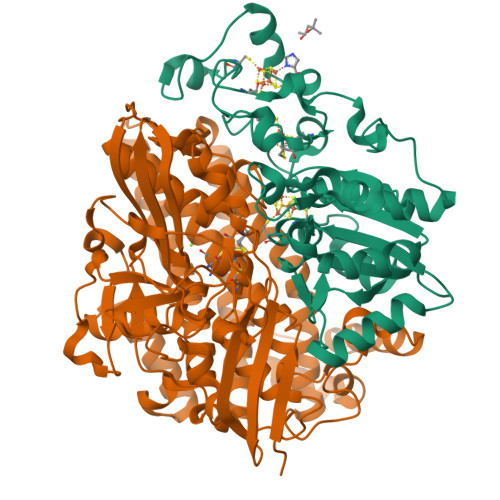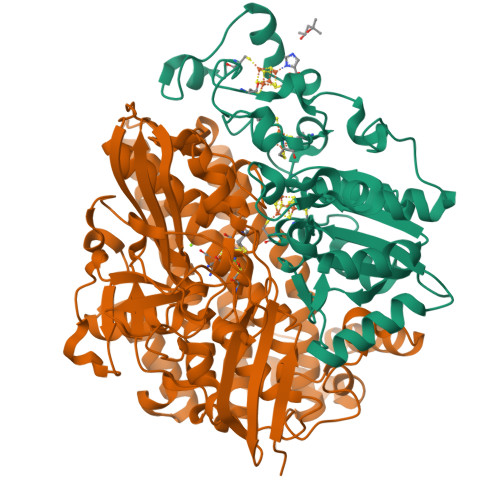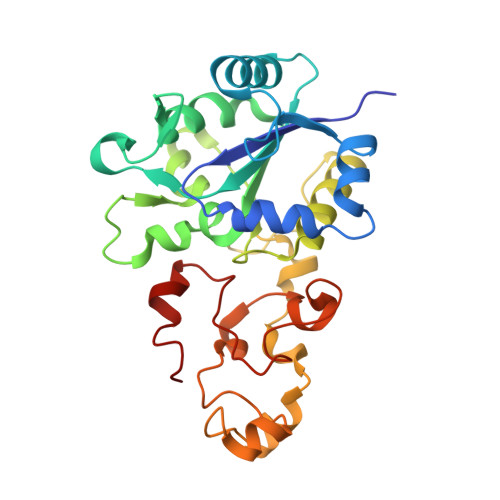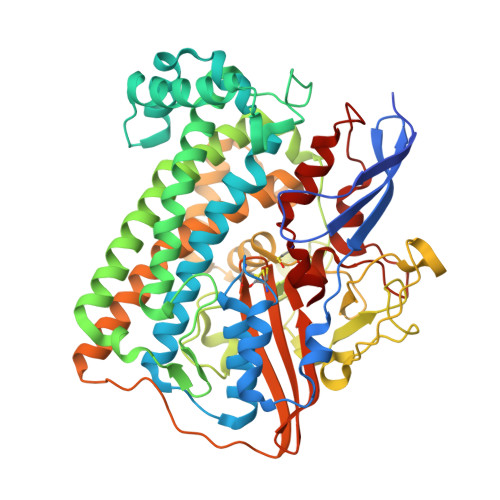Ni-elimination from the active site of the standard [NiFe]‐hydrogenase upon oxidation by O2.
Nishikawa, K., Mochida, S., Hiromoto, T., Shibata, N., Higuchi, Y.(2017) J Inorg Biochem 177: 435-437
- PubMed: 28967475
- DOI: https://doi.org/10.1016/j.jinorgbio.2017.09.011
- Primary Citation of Related Structures:
5XLE, 5XLF, 5XLG, 5XLH, 5Y4N - PubMed Abstract:
Hydrogenase is a key enzyme for a coming hydrogen energy society, because it has strong catalytic activities on both uptake and production of dihydrogen. We, however, have to overcome the sensitivity against O 2 of the enzyme, because hydrogenase is, generally, easily inactivated in the presence of O 2 . In this study, we have revisited the crystal structures of [NiFe]‑hydrogenase from sulfate-reducing bacterium in the several oxidized and reduced conditions. Our results revealed that the Ni-Fe active site of the enzyme exposed into O 2 showed two forms, Form-1 and Form-2. The Ni-Fe active site in Form-1 showed the typical Ni-B (inactive ready) structure, whereas those in Form-2 lost Ni with no relation to an exposure time to O 2 , and two cysteinyl sulfur ligands made a disulfide bond. On the other hand, the formation of sulfenylation of the cysteinyl ligand to Ni, which is often observed in the oxidized form, did not correlate with the Ni-elimination, but with exposure time to O 2 .
Organizational Affiliation:
Department of Picobiology, University of Hyogo, 3-2-1 Koto, Kamigori-cho, Ako-gun, Hyogo 678-1297, Japan.























